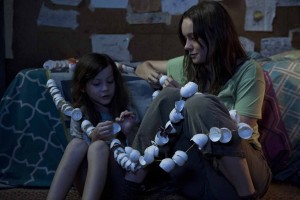
Nugent had early pre-conceptions about the challenges he would face editing based upon the script. “We could never cut to outside. We could never reset the scene, reset the moment by seeing a sunset outside, or show a passage of time that way. I wondered rhythmically if we would have challenges from scenes butting up against each other when you’re still in the same location. How is that going to feel?”
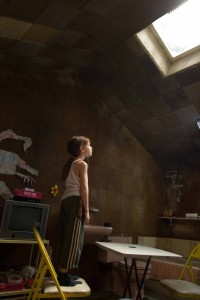 The first 20 minutes of the film were shot consecutively, a technique Abrahamson wanted to use to help Jacob Tremblay, the child actor playing Jack the protagonist, get a sense of the unfolding situation. This method also helped editorial get a sense of what the opening of the story would feel like in this room.
The first 20 minutes of the film were shot consecutively, a technique Abrahamson wanted to use to help Jacob Tremblay, the child actor playing Jack the protagonist, get a sense of the unfolding situation. This method also helped editorial get a sense of what the opening of the story would feel like in this room.
“Even after 10 minutes, which is pretty much the first day in Room, you get a sense about how this experience is going to play staying in the same location,” explained Nugent. “To be truthful, once you honed in on how delicate and precious this mother/child relationship was, where it was happening became less relevant.”
The key challenge to the editing became protecting the relationship and performances – not allowing anything to distract the viewers’ attention from, or otherwise get in the way of, that core relationship. Nugent trusted the performances and the story moved forward from there. If there had been any visual lethargy on screen by how scenes were being blocked, he would have been “the first person to shout.”
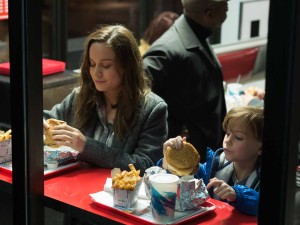 “It actually never happened. Between Lenny and Danny Cohen, the DP, the use of space and the use of every nook and corner of Room, it became several different locations in one,” noted Nugent. “Also in how they lit it and used the skylight to show the passage of time, because it is the one source of natural light in the room.”
“It actually never happened. Between Lenny and Danny Cohen, the DP, the use of space and the use of every nook and corner of Room, it became several different locations in one,” noted Nugent. “Also in how they lit it and used the skylight to show the passage of time, because it is the one source of natural light in the room.”
The use of voiceover, not only brought the audience into Jack’s world and point of view, but also gave the film punctuation points. Those moments could be extended or shortened to reset the day and the story. Making those elements work were a challenge, but the answer to that challenge came very quickly to Nugent, “Trust the story. Trust the performances.”
 The original cut of the film came in around 3 hours. Despite trimming scenes, the shape of the film essentially remained the same. The hospital in the middle of the film between the first and second halves worked as a starkly visual and emotional transition between the world of captivity and the outside world.
The original cut of the film came in around 3 hours. Despite trimming scenes, the shape of the film essentially remained the same. The hospital in the middle of the film between the first and second halves worked as a starkly visual and emotional transition between the world of captivity and the outside world.
That juncture in the film was pretty much as scripted, but was shortened to keep some of the momentum of the early scenes and then refocused to become a scene that Jack narrated. Serving as a sort of limbo between the two worlds, the hospital sequence marked a change in the rhythm of the story from the tension and excitement of escaping the room to a slower pace into the rather mundane, yet confusing, reality of everyday life on the outside.
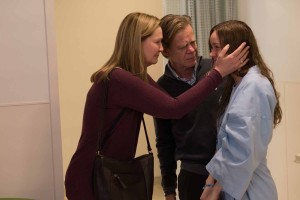 “We were still conscious of always moving forward,” commented Nugent. “So in the second half, although it has a tonally different feel and some of the scenes play a little slower, we were always conscious of keeping things moving forward. We removed anything that didn’t feel like the story was moving forward.”
“We were still conscious of always moving forward,” commented Nugent. “So in the second half, although it has a tonally different feel and some of the scenes play a little slower, we were always conscious of keeping things moving forward. We removed anything that didn’t feel like the story was moving forward.”
Shaping the boy’s performance was critical. The director worked intensely with the boy on set, often continuing to roll while resetting the scene to finesse the child’s performance.
Nugent has worked with the director on two other films, so he felt he had, “A sense of getting inside Lenny’s head about what he looks for. Essentially, it’s by removing things that aren’t real. Jacob’s performance was incredibly strong to begin with, but certainly Lenny would have to forensically break the scene down, depending on how complex it was.”
 It became a case of taking the best, most real moments and cutting the scene in a way that it did not feel like it was being assembled from many different parts. The team was constantly revising the rhythms while at the same time being conscious of not being too cutty.
It became a case of taking the best, most real moments and cutting the scene in a way that it did not feel like it was being assembled from many different parts. The team was constantly revising the rhythms while at the same time being conscious of not being too cutty.
“Quite often it’s how you reroute Jacob’s reactions through Ma’s performance. You try and not lose the sense of what the normal rhythm of the scene would feel like because you didn’t always have a direct reference,” shared Nugent. “There would be little pauses or stops, which on set didn’t feel like they were big, but on screen you instinctively know you have to do something there.”
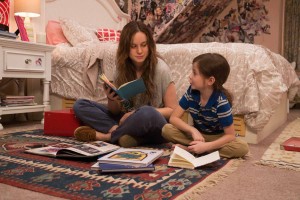 Particularly challenging was a long scene where Ma (Brie Larson) tells Jack about the real world, dissolving his sense of what the world has been up until this point. Made up and compressed from three smaller scenes into one long beat that contained considerable weight in the film, the team had to be very careful as to how they navigated through the dialog-heavy segment so as not to hit a false note. They had to protect the rhythm and air of that scene and keep it tense because there also had to be an underlying feeling hanging in the air that their captor, Old Nick (Sean Bridgers), could walk into the room at any point.
Particularly challenging was a long scene where Ma (Brie Larson) tells Jack about the real world, dissolving his sense of what the world has been up until this point. Made up and compressed from three smaller scenes into one long beat that contained considerable weight in the film, the team had to be very careful as to how they navigated through the dialog-heavy segment so as not to hit a false note. They had to protect the rhythm and air of that scene and keep it tense because there also had to be an underlying feeling hanging in the air that their captor, Old Nick (Sean Bridgers), could walk into the room at any point.
Sound played a huge part in the film, often filling in things that were unseen. The smallest sounds, not just the dialog, contributed to the story.
“Everything in a small space like that is heightened, how Nick walks in. His boots and how the air changes by having another body in the room. Big things like air conditioning. Tonal notes like that are just as effective as music at times. And in the second half, their absence as well. Hearing the world in a slightly different way, was something we talked about,” said Nugent. “We were always conscious of things like that throughout the process. It was really important, but at the same time, never getting in the way of story and performance.”





